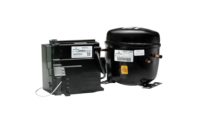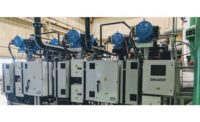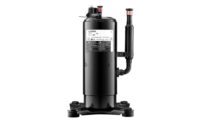Reducing environmental impact is an important part of doing business today. Companies are no longer waiting for government or industry-mandated regulations to lead the way in becoming more energy efficient and environmentally responsible. Yet, positively impacting the environment shouldn’t negatively impact your bottom line. Doing good needs to also be good for business.
That’s why the U.S. light commercial refrigeration market has started to switch to variable-speed compressors (VSCs) using R-290 natural refrigerant. VSCs are a much more environmentally responsible option that also provides significant savings and smart business benefits compared to traditional on-off compressors.
There’s no denying the substantial upfront financial investment required to phase out and upgrade legacy cooling systems with these more efficient solutions, so it’s important to carefully weigh the differences. To see the significant ROI and other advantages your business can realize from VSCs, there are five areas of comparison that matter most.
Variable vs. Constant Speed
A traditional on-off compressor operates at a constant speed, continuously switching on and off to meet your equipment’s energy demand. This operational pattern requires abrupt power loads when starting and can lead to wasted energy after the target temperature is reached but the motor has not yet turned off.
VSCs, like Embraco’s line of Fullmotion compressors, are able to recover from door openings much faster, reducing the time the system spends removing the heat infiltration. During stabilized conditions, the compressor can operate at a lower, more efficient speed to match the equipment’s energy demand, helping you to more quickly realize significant ROI.
In fact, the switch from on-off compressors to VSCs in vertical freezer equipment can pay for itself in just six months. That’s because VSCs reach target temperature up to 70% faster, saving up to 33% energy consumption.
Soft vs. Hard Start
VSCs “soft start,” meaning the compressor starts at a lower speed, ramps up to full speed within a few minutes, and continually adjusts current to provide needed power depending on the system’s conditions.
This slower ramp-up time compared to the “hard start” of on-off compressors dramatically reduces the starting current of the motor. This decreases stress on the motor, helping to extend the machine’s life span and ensure the cooling aspects of your business stay up and running.
The use of an inverter eliminates the need for the start relays, start capacitors, and run capacitors required in on-off compressors. Fewer parts that can fail from everyday wear and tear also helps to provide a better long-term return on your equipment investment. Additionally, operating at lower speeds leads to a significant noise reduction.
Hydrocarbon (Natural) vs. Hydrofluorocarbon Refrigerant
The global warming potential of refrigerant gas drops from 3,922 all the way down to 3 when using a natural option, like R-290, rather than a hydrofluorocarbon (HFC) refrigerant, like R-404A. Additionally, the total refrigerant charge drops from 350g to less than 150g, significantly reducing your direct carbon footprint.
What’s more, switching to a natural refrigerant can reduce energy consumption by up to 20%. Using that natural refrigerant in a VSC, rather than in an on-off compressor, can reduce energy consumption by another 20%, providing an ROI that can pay for itself in as little as six months. It’s a win-win combination for sustainability and profitability.
Ambient vs. Product Temperature
Compared to on-off compressors, VSCs recover from door openings much faster. In applications where there is a large temperature differential between the ambient temperature and the product temperature, VSCs are able to better control temperature swings caused by door openings. In fact, because they are able to react faster, systems can be made to run at higher suction temperatures and still maintain product temperatures providing further energy savings.
In fact, VSCs, such as Embraco’s line of Fullmotion compressors, have shown a 20% average pulldown time reduction, enabling the compressor to run at lower, energy-saving speeds. This ability to better regulate temperature also makes VSCs a highly effective solution for food preservation and medical applications, where products are very sensitive to temperature oscillations.
Compact vs. Conventional Layout
VSCs are not only energy efficient, they are space efficient, too. A VSC with natural refrigerant generates the same cooling capacity of a conventional on-off compressor using HFC gas but in a much more compact equipment layout.
By freeing up more merchandising space in commercial cabinets without changing any external dimensions, manufacturers can more creatively design equipment and provide more flexible layout options to stores.
The Advantages of VSCs are Obvious
After comparing the benefits of VSCs with natural refrigerant vs. on-off compressors, it’s easy to see why so many businesses are adopting this more efficient and reliable technology. It helps you to significantly reduce the environmental impact of your business while realizing energy savings that positively impact your bottom line.
Major refrigeration companies, like Embraco, now offer a wide range of VSC and natural refrigerant options. These trusted suppliers can help you access all the environmental — and, just as importantly, financial — benefits of making the switch to a more cost-effective way to increase equipment lifespan, company sustainability and ROI.





